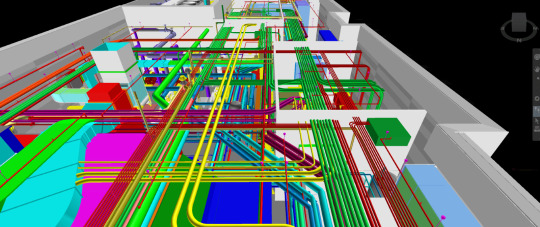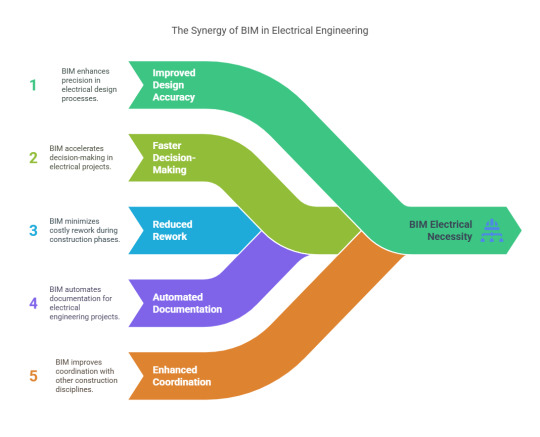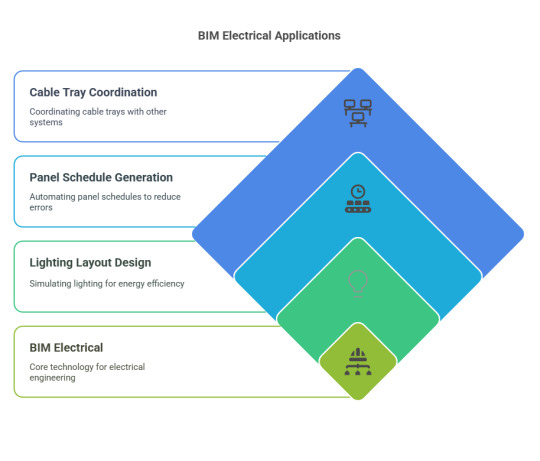#clash detection in bim
Explore tagged Tumblr posts
Text
How Clash Detection Improves Collaboration Among AEC Professionals

Construction projects entail various stages that demand for accuracy and collaborative nature among different AEC professionals. Clash detection is a vital process to quickly identify clashes and enhance collaboration. Read more in detail how clash detection is crucial for improving collaboration.
#bim clash detection#mep clash detection#clash detection in bim#bim clash detection services#clash detection in revit#revit mep clash detection#bim services provider#bim consulting company
2 notes
·
View notes
Photo

A game-changing value addition, clash detection can help bring together the multiple aspects of your as-built project plan and help you hit the ground running confidently.
#gsourcetechnologies#clashdetection#architecture#architectureservices#clash detection in bim#bim clash detection services
5 notes
·
View notes
Text
Mastering Clash Detection in BIM: Streamline Efficiency and Reduce Errors
Learn how to master clash detection in BIM to enhance project efficiency and minimize errors. Our guide explores effective techniques for identifying and resolving conflicts early in the design process, ensuring seamless integration of systems and components. Discover how advanced clash detection can streamline workflows, reduce costly rework, and improve overall project outcomes.
Website : https://pinnacleinfotech.com/clash-detection-in-bim/
Address : S.S.B. Sarani, Bidhannagar, Durgapur, West Bengal, India – 713212

0 notes
Text
BIM Coordination Services California
Experience expert BIM coordination services in California. Our BIM modeling company offers MEPF BIM services and architectural expertise.
#BIM Services#BIM Service in California#Architectural BIM Service in California#3D BIM Modeling#Scan to BIM#Clash Detection#MEPF BIM services
2 notes
·
View notes
Text
Montreal’s Best BIM Coordination Services Provider Company for BIM Projects, Canada

Silicon EC Canada delivers expert BIM Coordination Services to streamline construction projects nationwide. Our specialized team facilitates seamless integration of multidisciplinary designs by consolidating architectural, structural and building systems models into a unified digital environment. This coordinated approach enables early conflict identification, reduces costly revisions, and enhances collaborative workflows across project teams. We maintain a continuously updated digital project model throughout all phases, from initial design through construction documentation, ensuring all stakeholders work from accurate, real-time information. Our methodology improves decision-making, minimizes risks, and drives efficiency by maintaining data consistency across the project lifecycle while supporting effective communication between all project participants. The result is optimized construction processes with fewer delays and improved project outcomes.
Our Services
BIM Clash Detection Services
BIM Fabrication and Prefabrication
BIM LOD Services
Scan to Revit BIM Services
Architectural BIM Services
Structural BIM Modeling Services
We deliver comprehensive Building Information Modeling (BIM) services designed to optimize project efficiency and accuracy throughout the entire construction lifecycle. Our expertise enables seamless integration of multidisciplinary models, early clash detection, and streamlined collaboration—reducing errors, minimizing rework, and enhancing decision-making for architects, engineers, and contractors. We support major projects across Canada, including Toronto, Vancouver, Montreal, Calgary, Edmonton, Ottawa, and beyond, leveraging advanced digital workflows to ensure precision from concept to completion. By combining technical proficiency with a client-focused approach, we elevate project outcomes while maintaining the highest standards of quality and coordination in the AEC industry.
For more details click on the link below
For BIM Clash Detection
0 notes
Text
Seamless collaboration is key to construction success! MEP BIM integration enhances coordination, clash detection, and project efficiency, reducing costly rework and delays. Learn how BIM is transforming MEP design for smarter construction!
0 notes
Text
4D Construction Simulation Services - BIMPRO LLC
Our 4D Construction simulation services provide accurate 3D model integrated with construction sequence and schedule over time.

#4D Construction Simulation Services#BIM 4D construction simulation services#4D BIM services#4D Construction Simulation#Clash Detection
1 note
·
View note
Text
1 note
·
View note
Text
What is BIM Clash Detection and Its Significant Role in Construction Projects?

In the AEC industry, BIM has played a significant role making it easier for AEC professionals to work in coordination onto a single project. However, what makes the process easier is BIM clash detection which helps to catch and resolve potential errors and conflicts. With the help of clash detection, the AEC professionals can save time, money, materials, and effort before even the actual construction can begin. UniquesCADD offers high-quality, extensive BIM clash detection services by a team of experts.
#bim clash detection#clash detection in bim#bim clash detection services#clash detection in revit#revit mep clash detection
0 notes
Text
Top 05 Future Trends in BIM Clash Detection Software

Clash detection is one of the most critical steps teams can take to identify and address potential design conflicts before construction begins. This proactive approach helps to prevent issues and avoid costly rework during the construction process.
While clash detection has been used for some time, it can be done manually by reviewing design drawings or using lightbox overlays. However, the introduction of Building Information Modeling (BIM) tools has significantly improved the ease and accuracy of this process.
As a result, BIM clash detection has become the standard practice in commercial construction, and it is implemented during the earliest stages of design and preconstruction.
Building Information Modeling (BIM) has become a cornerstone of modern construction practices, enabling architects, engineers, and contractors to collaborate more effectively. One of the most significant advancements within this realm is BIM clash detection software, which helps identify and resolve conflicts between various design elements before construction begins. As we look toward the future, several key trends are emerging that promise to enhance the capabilities and effectiveness of BIM clash detection software.
Learn more: https://blog.prototechsolutions.com/top-05-future-trends-in-bim-clash-detection-software/
#BIM Clash Detection Software#Clash Detection#Clash Detection Software#BIM Clash Detection#Navisworks#Autodesk#BIM#Building Information Modeling#Mechanical#Electrical#Plumbing
0 notes
Text
BIM Electrical Essentials: A Beginner’s Guide for Electrical Engineers

As the Architecture, Engineering, and Construction (AEC) industry continues to adopt digital transformation, Building Information Modeling (BIM) has emerged as a powerful tool. While BIM is often associated with architectural and structural elements, its impact on electrical engineering is equally profound. This blog explores BIM electrical essentials—key concepts and tools that every electrical engineer should know to stay competitive and efficient in today’s digital construction landscape.
What Is BIM in Electrical Engineering?
BIM in electrical engineering refers to the use of intelligent 3D models to design, document, and manage electrical systems throughout a building’s lifecycle. It allows engineers to simulate, analyze, and coordinate electrical components such as lighting, power distribution, cable trays, fire alarm systems, and communication networks—all within a unified digital environment.
This digital representation goes far beyond simple drafting. It includes critical data such as load calculations, panel schedules, and circuiting, making BIM for electrical engineers a comprehensive approach to modern design and construction.
Why Electrical Engineers Should Embrace BIM

In the traditional workflow, electrical design is often siloed, leading to miscommunication, design errors, and costly changes during construction. BIM bridges these gaps by creating a collaborative environment where multiple disciplines can work together in real time.
For an electrical engineer, the benefits of BIM electrical workflows include:
Improved design accuracy
Faster decision-making
Reduced rework on-site
Automated documentation
Enhanced coordination with other disciplines like HVAC and plumbing
These advantages make BIM electrical not just a trend but a necessity in today’s BIM in AEC industry.
Roles and Responsibilities of a BIM Electrical Engineer
A BIM electrical engineer is more than just a designer. They play a crucial role in integrating electrical systems into the BIM workflow. Their responsibilities often include:
Creating and managing 3D models of electrical systems
Ensuring compliance with codes and standards
Coordinating with MEP teams to avoid conflicts
Performing load and circuit calculations
Extracting material quantities and construction documents
Using simulation tools for energy and lighting analysis
The role demands both engineering knowledge and BIM proficiency, making the BIM electrical engineer a valuable asset in multidisciplinary teams.
What Does an Electrical BIM Modeller Do?
An electrical BIM modeller is typically responsible for the hands-on creation of the BIM model. Working under the guidance of an engineer, they develop detailed 3D representations of electrical systems, ensuring accuracy and constructability. Key tasks include:
Modeling conduits, cable trays, switches, and panels
Embedding data like voltage, circuit IDs, and cable types
Tagging and annotating electrical elements
Reviewing designs for clash detection
Exporting plans and schedules for construction
A skilled electrical BIM modeller is not just a drafter—they understand design intent and how electrical systems function within a building.
MEP BIM Modeling: Where Electrical Fits In
MEP BIM modeling encompasses the mechanical, electrical, and plumbing disciplines in a building. Within this collaborative environment, electrical systems must work in harmony with HVAC ducts, plumbing pipes, and other elements.
This is where BIM truly shines—by enabling interdisciplinary coordination. Electrical engineers can:
Share models with mechanical and plumbing teams
Identify and resolve spatial conflicts through clash detection
Plan routing that minimizes space usage and maximizes efficiency
Ensure compliance with codes for clearances and accessibility
By participating in MEP BIM modeling, electrical engineers avoid costly errors and enhance overall project performance.
Clash Detection: A Core Benefit of BIM Electrical
One of the most valuable features of BIM in electrical engineering is clash detection. This process uses BIM software to identify and highlight conflicts between electrical components and other building systems before construction begins.
For example, if a cable tray conflicts with a duct or structural beam, the BIM model flags the issue. Engineers and modellers can then make adjustments in the design phase—saving time, money, and effort during construction.
Clash detection leads to:
Fewer change orders
Lower labor and material costs
Faster project timelines
Increased stakeholder confidence
For an electrical BIM modeller, performing clash detection is a daily task that adds real value to the project.
Common BIM Tools for Electrical Engineers
Several BIM software platforms cater to electrical engineering. Here are the most commonly used tools:
Autodesk Revit: Industry-standard for BIM electrical design and modeling.
Navisworks: Used for model coordination and clash detection.
AutoCAD MEP: Useful for 2D/3D MEP designs, though Revit is more advanced.
ETAP, Dialux, and Relux: Often integrated for load calculation and lighting simulation.
Becoming proficient in these tools is essential for any aspiring BIM electrical engineer.
Real-World Applications of BIM Electrical

To understand the value of BIM for electrical engineers, let’s look at a few practical applications:
Lighting Layout Design
Engineers can simulate daylight and artificial lighting in a 3D environment, optimizing energy usage and placement.
Panel Schedule Generation
BIM can auto-generate accurate panel schedules based on the circuiting in the model, reducing manual errors.
Cable Tray Coordination
Routing trays around HVAC systems and structural components becomes easier, thanks to real-time visibility across trades.
Facility Management
After construction, the BIM model serves as a digital twin. Electrical teams can use it for maintenance, upgrades, and energy audits.
These use cases demonstrate how BIM electrical adds value throughout the building lifecycle—not just during design.
BIM in the AEC Industry: A Collaborative Future
The integration of BIM in AEC industry practices has reshaped the way buildings are designed, constructed, and maintained. No longer can electrical engineers work in isolation. BIM demands collaboration, communication, and a digital-first mindset.
As governments and clients increasingly mandate BIM deliverables, electrical professionals who lack BIM skills risk falling behind. Conversely, those who embrace BIM gain a competitive edge, delivering smarter designs with greater efficiency.
Tips for Beginners: Getting Started with BIM Electrical
If you're new to BIM electrical, here are some practical steps to begin your journey:
Learn Revit MEP: Start with basic tutorials, then focus on electrical components.
Understand Electrical Systems: Solid grounding in electrical engineering principles is still essential.
Study BIM Standards: Familiarize yourself with ISO 19650, LOD (Level of Development), and other BIM-related standards.
Join BIM Communities: Participate in forums, webinars, and online courses.
Practice with Real Projects: Nothing beats hands-on experience. Try small-scale models or volunteer for BIM tasks in your team.
As a BIM electrical engineer, continuous learning is part of the job. The more you engage with BIM, the more valuable your skills become.
Final Thoughts
The future of electrical engineering lies in digital, integrated workflows—and BIM electrical is at the heart of this transformation. Whether you're an aspiring electrical BIM modeller, a seasoned engineer looking to upskill, or a student entering the field, understanding the essentials of BIM for electrical engineers is your first step toward staying relevant and impactful.
By mastering tools, processes, and collaboration techniques, you'll not only design better systems—you'll help shape smarter, more sustainable buildings.
At SmartCADD, we believe in empowering professionals with the skills and knowledge needed to lead in the digital age of construction. Ready to electrify your career with BIM? Now’s the time to plug in.
#bim electrical#electrical bim modeler#bim electrical engineer#mep bim modeling#bim for electrical engineers#bim in electrical engineering#bim#BIM in AEC Industry#clash detection
0 notes
Text
Leveraging BIM for Effective Clash Detection in Construction Projects
Building Information Modeling (BIM) has revolutionized the construction industry by enhancing collaboration and efficiency. A pivotal application of BIM is in clash detection, a process that identifies and resolves conflicts among various building components before construction begins.
Understanding Clash Detection in BIM

Clash detection involves pinpointing conflicts where different elements of a building—such as structural components, electrical systems, or plumbing—intersect improperly within a digital model.
These conflicts, or "clashes," can lead to significant issues during construction if not addressed early. BIM facilitates the identification of these clashes in a virtual environment, allowing for preemptive resolution.
Types of Clashes

Hard Clashes: Occur when two objects occupy the same physical space, such as a beam intersecting with a duct.
Soft Clashes: Involve objects breaching spatial buffers or clearance zones, potentially causing maintenance or operational issues.
Workflow or 4D Clashes: Relate to scheduling conflicts where the timeline of construction tasks overlaps inappropriately.
The Clash Detection Process Using BIM

Model Creation: Designers and engineers develop detailed 3D models of their respective disciplines (architectural, structural, MEP) using BIM software.
Model Integration: These individual models are combined into a single, coordinated BIM model, representing the entire project comprehensively.
Clash Detection Analysis: Specialized BIM tools automatically analyze the integrated model to identify clashes by checking for interferences among components.
Clash Report Generation: The software generates reports detailing the identified clashes, including their locations and the elements involved.
Clash Resolution: Project stakeholders collaborate to address and resolve the detected clashes, adjusting designs as necessary to eliminate conflicts.
Validation and Iteration: The updated model is re-examined to ensure all clashes have been resolved, repeating the process as needed throughout the project lifecycle.
Benefits of Using BIM for Clash Detection
Cost Savings: Identifying clashes early reduces the likelihood of costly on-site modifications and delays.
Improved Collaboration: BIM enhances communication among project stakeholders, fostering a collaborative environment for resolving design conflicts.
Time Efficiency: Automated clash detection accelerates the design review process, helping to maintain project schedules.
Risk Mitigation: Addressing potential issues in the virtual model minimizes the risk of errors during construction, enhancing overall project safety and quality.
Best Practices for Effective Clash Detection
Early Implementation: Incorporate clash detection early in the design phase to identify and resolve issues promptly.
Regular Updates: Continuously update and review models to capture new clashes that may arise as designs evolve.
Clear Communication: Maintain open lines of communication among all stakeholders to ensure collaborative resolution of clashes.
Comprehensive Training: Ensure team members are proficient in using BIM tools and understand the clash detection process.
Conclusion
Utilizing BIM for clash detection streamlines the construction process by proactively identifying and resolving design conflicts. This approach leads to cost savings, improved collaboration, and enhanced project outcomes, solidifying BIM's role as an essential tool in modern construction management.
#building construction#building information modeling#BIM#construction#building design#architecture#clash detection
0 notes
Text
BIM Modeling & BIM Coordination in Chicago
We provide top BIM modeling services with expert BIM coordination in Chicago. Transform your projects with our innovative solutions.
#BIM Services#BIM Service in Chicago#Architectural BIM Service in Chicago#3D BIM Modeling#Scan to BIM#Clash Detection#MEPF BIM services
2 notes
·
View notes
Text
Explore Montreal’s Best 3D BIM Coordination Services Provider Company

Silicon EC CA excels in delivering advanced 3D BIM Coordination Services tailored specifically for the Canadian AEC sector. Our team of BIM professionals combines extensive technical BIM expertise across architecture, structural engineering, and MEP disciplines to drive project success. We leverage advanced software tools for comprehensive BIM management, ensuring precise integration of all project components. Our proactive approach includes rigorous clash detection and resolution, allowing us to identify potential conflicts early in the design process to mitigate risks associated with construction changes.
Our Services
BIM MEP Coordination Services
Structural BIM Coordination Services
Revit BIM Coordination Services
BIM 360 Model Coordination Services
Architectural BIM Coordination Services
BIM Coordination Drawings Services
By fostering clear and consistent communication among all stakeholders, we create a collaborative environment that enhances project coordination and alignment. With a strong commitment to quality assurance and innovative practices, having a proven track record of delivering projects on time and within budget. Serving best BIM Modeling Solutions across the canada in cities like Kelowna, Edmonton, Calgary, Vancouver, Toronto, Ottawa, Kitchener, Oshawa, Winnipeg, Quebec, etc.
For more details click on the link below
To explore more about our CAD and BIM Services
#BIM#BIM Modeling#BIM Outsourcing#BIM designs#BIM Coordinators#BIM Clash Detection#Architectural BIM#Structural BIM#MEP BIM#Canada
0 notes
Text
Cut costs & accelerate timelines with Architectural BIM modeling! By integrating 3D visualization, clash detection, and real-time collaboration, BIM reduces rework, optimizes material use, and enhances project coordination. Discover how BIM is transforming architecture!
#Architectural BIM Modeling#3D Visualization#Clash Detection#BIM Modeling for Architects#Construction
1 note
·
View note